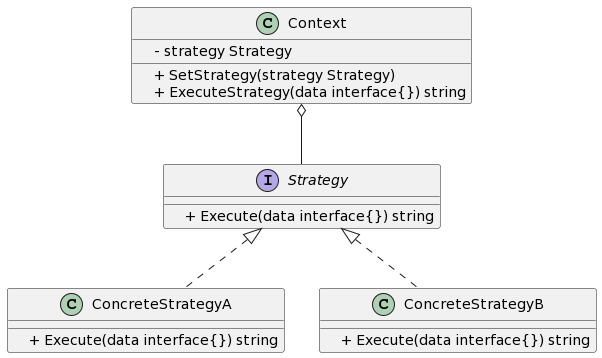1. What is the Strategy Pattern
The strategy pattern is a behavioral design pattern that allows us to choose different algorithms or behaviors based on different situations. It encapsulates different algorithms in separate strategy classes and allows these strategy classes to be interchangeable. By using the strategy pattern, we can dynamically change an object's behavior at runtime without directly modifying the object's structure.
2. Characteristics and Advantages of the Strategy Pattern
The strategy pattern has the following characteristics and advantages:
- The strategy class can change independently, adding a new strategy class does not affect the original code, complying with the open-closed principle.
- Clients can choose different strategies as needed, conforming to the single responsibility principle.
- The strategy pattern provides reusable algorithms or behaviors, avoiding code duplication.
- The strategy pattern provides a better way to organize code, making the code clearer and easier to maintain.
3. Examples of Practical Applications of the Strategy Pattern
The strategy pattern is widely used in the following scenarios:
- Different payment methods, such as Alipay, WeChat Pay, etc.
- Different sorting algorithms, such as bubble sort, quicksort, etc.
- Different logging methods, such as console output, file output, etc.
4. Implementation of the Strategy Pattern in Golang
In this section, we will implement the strategy pattern using Golang and provide corresponding examples, UML class diagrams, and code comments.
4.1. UML Class Diagram
The following is the UML class diagram for the strategy pattern in Golang:

4.2. Example Introduction
From the above UML class diagram, we can see the three roles of the strategy pattern: the Strategy interface, concrete strategy classes (e.g., ConcreteStrategyA and ConcreteStrategyB), and the context class Context.
In this example, we will use the selection of payment methods for e-commerce system orders as an explanation. The client selects the corresponding strategy (ConcreteStrategyA or ConcreteStrategyB) based on the payment method and then calls the method of the context class to make the payment.
4.3. Implementation Step 1: Define the Strategy Interface and Concrete Strategy Classes
First, we need to define a strategy interface Strategy, which includes an Execute(data interface{}) string method for executing the specific strategy.
type Strategy interface {
Execute(data interface{}) string
}
type ConcreteStrategyA struct{}
func (s *ConcreteStrategyA) Execute(data interface{}) string {
// Logic for executing specific strategy A
}
type ConcreteStrategyB struct{}
func (s *ConcreteStrategyB) Execute(data interface{}) string {
// Logic for executing specific strategy B
}
4.4. Implementation Step 2: Implementing the Context Class
Next, we need to implement the Context class, which encapsulates the specific strategy object, and provides the SetStrategy(strategy Strategy) method to set the strategy object, as well as the ExecuteStrategy(data interface{}) string method to execute the specific strategy.
type Context struct {
strategy Strategy
}
func (c *Context) SetStrategy(strategy Strategy) {
c.strategy = strategy
}
func (c *Context) ExecuteStrategy(data interface{}) string {
if c.strategy == nil {
// Default strategy execution logic
} else {
return c.strategy.Execute(data)
}
}
4.5. Implementation Step 3: Using the Strategy Pattern to Complete Actual Business Logic
Finally, we can use the strategy pattern in the client to complete the actual business logic.
func main() {
context := &Context{}
// Set specific strategy A using the SetStrategy method
context.SetStrategy(&ConcreteStrategyA{})
result := context.ExecuteStrategy("Alipay payment")
// Set specific strategy B using the SetStrategy method
context.SetStrategy(&ConcreteStrategyB{})
result = context.ExecuteStrategy("WeChat payment")
}
Conclusion
Through the example code above, we have learned how to implement the strategy pattern in Golang. The strategy pattern can help us choose different algorithms or behaviors based on different situations, and it provides a better way to organize code, making it clearer and easier to maintain. In practical development, using the strategy pattern reasonably can effectively improve the scalability and maintainability of the code.